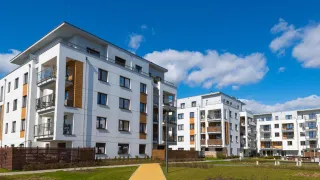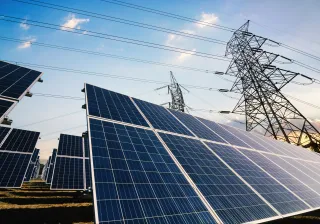The structure of the future energy system will be completely different from the present: variable wind and solar power generation and the electrification of heating and mobility require flexibility, storage and new transmission connections as partners. This new kind of system is described by the term sector coupling, a connected energy system. Consumers are also part of this system through their electric cars and houses. The changing situation is a great opportunity for the emission reductions required to combat climate change. At the same time, it is a major challenge for political decisions and also for consumer choices. Energy systems research is looking for the best answers to different scenarios.
Policy makers need to know which investment combinations are most cost-effective or how to ensure energy security. The consumer, on the other hand, considers how changes are visible in everyday life or what choices are possible and worthwhile to make. Answers can be complex and contextual. In terms of modelling, the simulation of a more complex system which contains greater uncertainties requires increased accuracy, efficiency and flexibility, as well as high-quality data.
Juha Kiviluoma, Principal Scientist at VTT, presents as an example the possibilities of flexible charging of electric cars to influence the need for large battery storage facilities in Finland.
“In this case, it is necessary to know, among other things, the limitations of different technologies, consumer behaviour, their variation, and to present them with sufficient accuracy in terms of time and place in the model. Because the resolution is limited by the computational capacity, it is not possible to model each user or car separately, but, rather, to make simplifications. However, a loss of precision eats into the reliability of the results. The problem can be solved by the ability of the model to target calculation accuracy and with good mathematical formulation. The solution capacity of computers is also constantly increasing. In addition to accuracy, it is important that many sectors - in this case, electricity production and transport - can be optimised simultaneously. It is an advantage, if the model itself does not restrict the sectors to be selected or their connection methods, and that it is possible to add new interesting technologies to the model without interfering with its basic structure," Kiviluoma says.
“In our latest EU-funded model development project Spine, we developed, in cooperation with other universities and research organisations, an optimisation model called SpineOpt, which is able not only to optimise many sectors simultaneously, but also to flexibly adjust the accuracy of the calculation where the most accurate modelling is needed. An important value in model development for us is also openness, which is why the model has been developed in an open source code and licence-free programming language for researchers and modellers,” says Kiviluoma, project manager.
The most reliable estimates can be obtained by modelling several alternative developments and their combined effects
Another important factor in the modelling of future energy systems is the management of data and scenarios. For example, to study the impacts of smart heating of houses on district heating prices, data is needed from several sources, such as building databases and climate model temperature time series. There is also a need for a number of future-related assumptions which contain uncertainties, such as technology prices, market developments or people's readiness to invest in control technology.
At best, scenario work can be automated and more alternatives can be taken into account. "Modelling projects usually focus only on the model and optimisation itself, but in the Spine project we also wanted to create solutions to this data and scenario management problem. We developed a tool called Spine Toolbox, the biggest advantage of which is that it can be used for different models and even for different fields. And, of course, it is also open to use,” says Kiviluoma, summarising his point.
As regards the sector integration mentioned at the beginning, modelling has shown, for example, that the increase in variable electricity generation does not cause insurmountable problems or massive investment costs for the system.
"If there is sufficient flexibility in the electricity system, wind and solar power can also effectively reduce emissions in other energy consumption sectors," says Kiviluoma.





